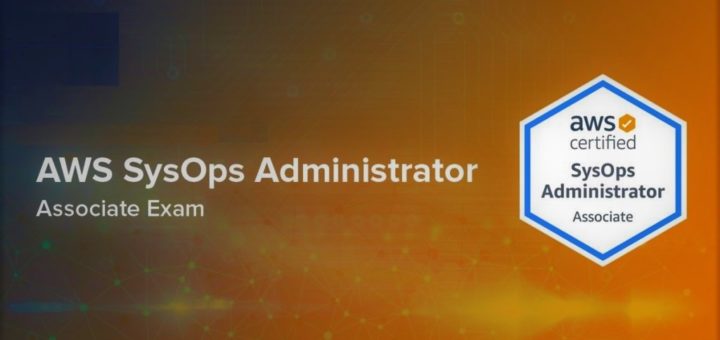Question #141
A Solutions Architect is designing a customer order processing application that will likely have high usage spikes.
What should the Architect do to ensure that customer orders are not lost before being written to an Amazon RDS database? (Choose two.)
- A. Use Amazon CloudFront to deliver the application front end.
- B. Use Elastic Load Balancing with a round-robin routing algorithm.
- C. Have the orders written into an Amazon SQS queue.
- D. Scale the number of processing nodes based on pending order volume.
- E. Have a standby Amazon RDS instance in a separate Availability Zone.
Correct Answer:AC
Question #142
Employees from several companies use an application once a year during a specific 30-day period. The periods are different for each company. Traffic to the application spikes during these 30-day periods.
How can the application be designed to handle these traffic spikes?
- A. Use an Amazon Route 53 latency routing policy to route traffic to an Amazon EC2 instance with the least lag time.
- B. Use Amazon S3 to cache static elements of the website requests.
- C. Use an Auto Scaling group to scale the number of EC2 instances to match the site traffic.
- D. Use Amazon Cloud Front to serve static assets to decrease the load on the EC2 instances.
Correct Answer:A
Question #143
A restaurant reservation application needs the ability to maintain a waiting list. When a customer tries to reserve a table, and none are available, the customer must be put on the waiting list, and the application must notify the customer when a table becomes free.
What service should the Solutions Architect recommend to ensure that the system respects the order in which the customer requests are put onto the waiting list?
- A. Amazon SNS
- B. AWS Lambda with sequential dispatch
- C. A FIFO queue in Amazon SQS
- D. A standard queue in Amazon SQS
Correct Answer: C
Question #144
A Solutions Architect is designing a solution for a dynamic website, “example.com,” that is deployed in two regions: Tokyo, Japan and Sydney, Australia. The
Architect wants to ensure that users located in Australia are directed to the website deployed in the Sydney region and users located in Japan are redirected to the website in the Tokyo region when they browse to “example.com”.
Which service should the Architect use to achieve this goal with the LEAST administrative effort?
- A. Amazon CloudFront with geolocation routing
- B. Amazon Route 53
- C. Application Load Balancer
- D. Network Load Balancer deployed across multiple regions
Correct Answer:B
Reference:
https://docs.aws.amazon.com/Route53/latest/DeveloperGuide/routing-policy.html
Question #145
A company has a popular multi-player mobile game hosted in its on-premises datacenter. The current infrastructure can no longer keep up with demand and the company is considering a move to the cloud.
Which solution should a Solutions Architect recommend as the MOST scalable and cost-effective solution to meet these needs?
- A. Amazon EC2 and an Application Load Balancer
- B. Amazon S3 and Amazon CloudFront
- C. Amazon EC2 and Amazon Elastic Transcoder
- D. AWS Lambda and Amazon API Gateway
Correct Answer: D
Question #146
A company has instances in private subnets that require outbound access to the internet.
This requires:
- A. Assigning a public IP address to the instance.
- B. Updating the route table associated with the subnet to point internet traffic through a NAT gateway.
- C. Updating the security group associated with the subnet to allow ingress on 0.0.0.0/0.
- D. Routing traffic from the instance through a VPC endpoint that has internet access.
Correct Answer:B
Question #147
An organization regularly backs up their application data. The application backups are required to be stored on Amazon S3 for a certain amount of time. The backups should be accessed instantly in the event of a disaster recovery.
Which of the following Amazon S3 storage classes would be the MOST cost-effective option to meet the needs of this scenario?
- A. Glacier Storage Class
- B. Standard Storage Class
- C. Standard “” Infrequent Access (IA)
- D. Reduced Redundancy Class (RRS)
Correct Answer:C
Reference:
https://aws.amazon.com/s3/features/
Question #148
An organization runs an online voting system for a television program. During broadcasts, hundreds of thousands of votes are submitted within minutes and sent to a front-end fleet of auto-scaled Amazon EC2 instances. The EC2 instances push the votes to an RDBMS database. The database is unable to keep up with the front-end connection requests.
What is the MOST efficient and cost-effective way of ensuring that votes are processed in a timely manner?
- A. Each front-end node should send votes to an Amazon SQS queue. Provision worker instances to read the SQS queue and process the message information into RDBMS database.
- B. As the load on the database increases, horizontally-scale the RDBMS database with additional memory-optimized instances. When voting has ended, scale down the additional instances.
- C. Re-provision the RDBMS database with larger, memory-optimized instances. When voting ends, re-provision the back-end database with smaller instances.
- D. Send votes from each front-end node to Amazon DynamoDB. Provision worker instances to process the votes in DynamoDB into the RDBMS database.
Correct Answer:A
Question #149
An application publishes Amazon SNS messages in response to several events. An AWS Lambda function subscribes to these messages. Occasionally the function will fail while processing a message, so the original event message must be preserved for root cause analysis.
What architecture will meet these requirements without changing the workflow?
- A. Subscribe an Amazon SQS queue to the Amazon SNS topic and trigger the Lambda function from the queue.
- B. Configure Lambda to write failures to an SQS Dead Letter Queue.
- C. Configure a Dead Letter Queue for the Amazon SNS topic.
- D. Configure the Amazon SNS topic to invoke the Lambda function synchronously.
Correct Answer:A
Question #150
An application uses an Amazon RDS MySQL cluster for the database layer. Database growth requires periodic resizing of the instance. Currently, administrators check the available disk space manually once a week.
How can this process be improved?
- A. Use the largest instance type for the database.
- B. Use AWS CloudTrail to monitor storage capacity.
- C. Use Amazon CloudWatch to monitor storage capacity.
- D. Use Auto Scaling to increase storage size.
Correct Answer:D
Question #151
A customer owns a MySQL database that is accessed by various clients who expect, at most, 100 ms latency on requests. Once a record is stored in the database, it rarely changed. Clients only access one record at a time.
Database access has been increasing exponentially due to increased client demand. The resultant load will soon exceed the capacity of the most expensive hardware available for purchase. The customer wants to migrate to AWS, and is willing to change database systems.
Which service would alleviate the database load issue and offer virtually unlimited scalability for the future?
- A. Amazon RDS
- B. Amazon DynamoDB
- C. Amazon Redshift
- D. AWS Data Pipeline
Correct Answer:B
Question #152
A business team requires a structured storage solution to store all of a company’s historical sales data. Currently there are 4 TB of data, which will grow to hundreds of terabytes within a few years. The team must be able to regularly run queries against the data using current business intelligence tools. Fast performance is required despite the dataset growth.
Which solution should the company use?
- A. Amazon Redshift
- B. Amazon Aurora
- C. Amazon DynamoDB
- D. Amazon S3
Correct Answer:A
Reference:
https://aws.amazon.com/blogs/aws/category/amazon-redshift/
Question #153
A prediction process requires access to a trained model that is stored in an Amazon S3 bucket. The process takes a few seconds to process an image and make a prediction. The process is not overly resource-intensive, does not require any specialized hardware, and takes less than 512 MB of memory to run.
What would be the MOST effective compute solution for this use case?
- A. Amazon ECS
- B. Amazon EC2 Spot instances
- C. AWS Lambda functions
- D. AWS Elastic Beanstalk
Correct Answer:C
Question #154
An application that runs on an Amazon EC2 instance must make secure calls to Amazon S3 buckets.
Which steps can a Solutions Architect take to ensure that the calls are made without exposing credentials?
- A. Generate an access key ID and a secret key, and assign an IAM role with least privilege.
- B. Create an IAM policy granting access to all services and assign it to the Amazon EC2 instance profile.
- C. Create an IAM role granting least privilege and assign it to the Amazon EC2 instance profile.
- D. Generate temporary access keys to grant users temporary access to the Amazon EC2 instance.
Correct Answer:C
Question #155
A Solutions Architect needs to design a centralized logging solution for a group of web applications running on Amazon EC2 instances. The solution requires minimal development effort due to budget constraints.
Which of the following should the Architect recommend?
- A. Create a crontab job script in each instance to push the logs regularly to Amazon S3.
- B. Install and configure Amazon CloudWatch Logs agent in the Amazon EC2 instances.
- C. Enable Amazon CloudWatch Events in the AWS Management Console.
- D. Enable AWS CloudTrail to map all API calls invoked by the applications.
Correct Answer:B
Question #156
A company is using Amazon S3 as its local repository for weekly analysis reports. One of the company-wide requirements is to secure data at rest using encryption. The company chose Amazon S3 server-side encryption. The company wants to know how the object is decrypted when a GET request is issued.
Which of the following answers this question?
- A. The user needs to place a PUT request to decrypt the object.
- B. The user needs to decrypt the object using a private key.
- C. Amazon S3 manages encryption and decryption automatically.
- D. Amazon S3 provides a server-side key for decrypting the object.
Correct Answer:D
Question #157
A company is looking for a fully-managed solution to store its players’ state information for a rapidly growing game. The application runs on multiple Amazon EC2 nodes, which can scale according to the incoming traffic. The request can be routed to any of the nodes, therefore, the state information must be stored in a centralized database. The players’ state information needs to be read with strong consistency and needs conditional updates for any changes.
Which service would be MOST cost-effective, and scale seamlessly?
- A. Amazon S3
- B. Amazon DynamoDB
- C. Amazon RDS
- D. Amazon Redshift
Correct Answer:B
Question #158
An application is running on Amazon EC2 instances behind an Application Load Balancer. The instances run in an Auto Scaling group across multiple Availability
Zones. Four instances are required to handle a predictable traffic load. The Solutions Architect wants to ensure that the operation is fault-tolerant up to the loss of one Availability Zone.
Which is the MOST cost-efficient way to meet these requirements?
- A. Deploy two instances in each of three Availability Zones.
- B. Deploy two instances in each of two Availability Zones.
- C. Deploy four instances in each of two Availability Zones.
- D. Deploy one instance in each of three Availability Zones.
Correct Answer:A
Question #159
A Solutions Architect is designing a three-tier web application that includes an Auto Scaling group of Amazon EC2 instances running behind an ELB Classic Load
Balancer. The security team requires that all web servers must be accessible only through the Load Balancer, and that none of the web servers are directly accessible from the Internet.
How should the Architect meet these requirements?
- A. Use a Load Balancer installed on an Amazon EC2 instance.
- B. Configure the web servers’ security group to deny traffic from the public Internet.
- C. Create an Amazon CloudFront distribution in front of the ELB Classic Load Balancer.
- D. Configure the web tier security group to allow only traffic from the ELB Classic Load Balancer.
Correct Answer:D
Question #160
A Solutions Architect is designing a web application that will be hosted on Amazon EC2 instances in a public subnet. The web application uses a MySQL database in a private subnet. The database should be accessible to database administrators.
Which of the following options should the Architect recommend? (Choose two.)
- A. Create a bastion host in a public subnet, and use the bastion host to connect to the database.
- B. Log in to the web servers in the public subnet to connect to the database.
- C. Perform DB maintenance after using SSH to connect to the NAT Gateway in a public subnet.
- D. Create an IPSec VPN tunnel between the customer site and the VPC, and use the VPN tunnel to connect to the database.
- E. Attach an Elastic IP address to the database.
Correct Answer:BD



